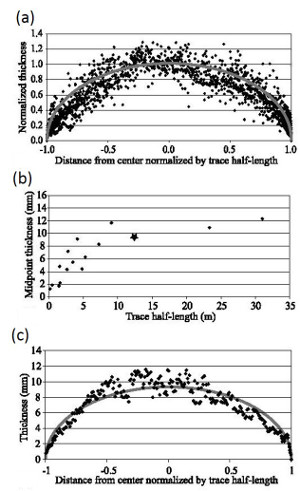| |||||||
|
|
|||||||
|
|
|||||||
| Compaction Band Length - Thickness Scaling | |||||||
|
One of the most extensive data sets on the relationship between the thickness and length for compaction bands is that by Sternlof et al. (2005) (Figure 1). It appears that compaction band thickness varies along the traces of the bands (a) with the maximum values with an initial linearly increasing trend before flattening beyond about 10 m half length (b). Note that the plot in (c) shows the thickness data for a particular compaction band of slightly longer than 24 meters. | |||||||
| Reference: |
|||||||
| Sternlof, K.R., Rudnicki, J.W., Pollard, D.D., 2005 |
|||||||
|
Readme | About Us | Acknowledgement | How to Cite | Terms of Use | Ⓒ Rock Fracture Knowledgebase |
|||||||
